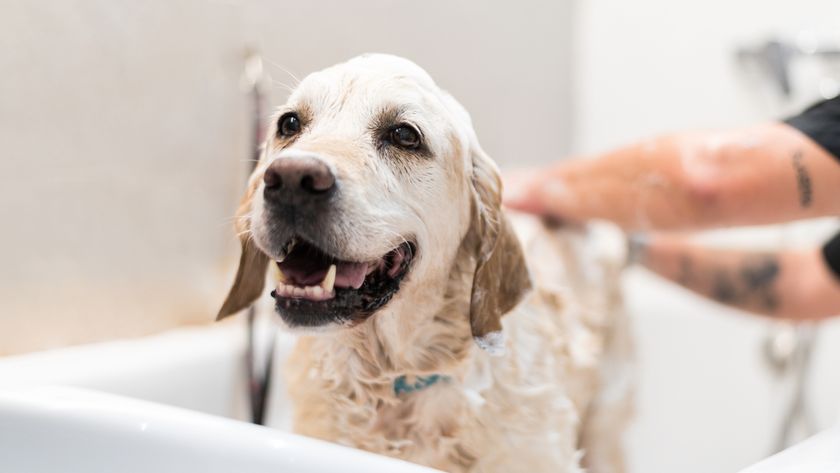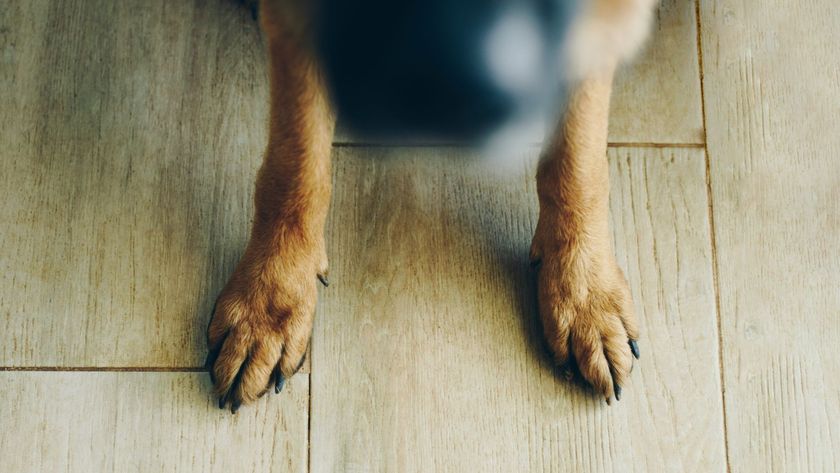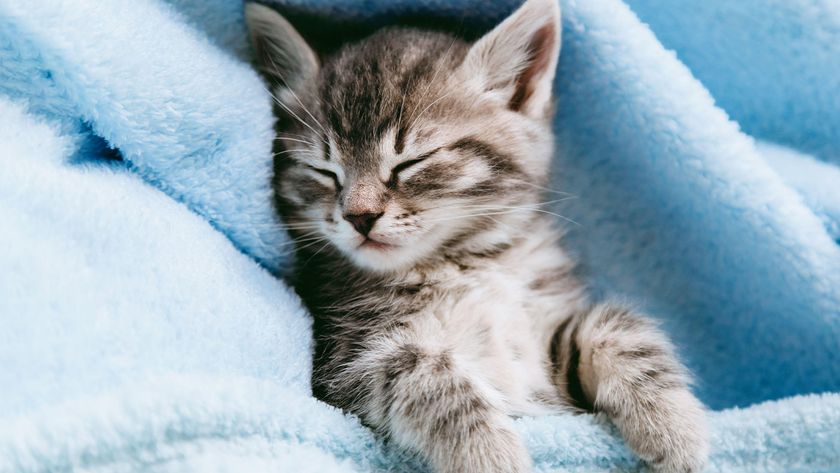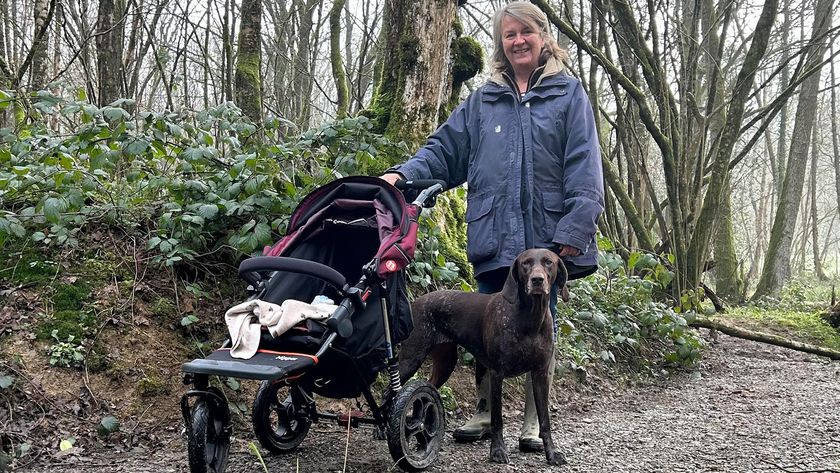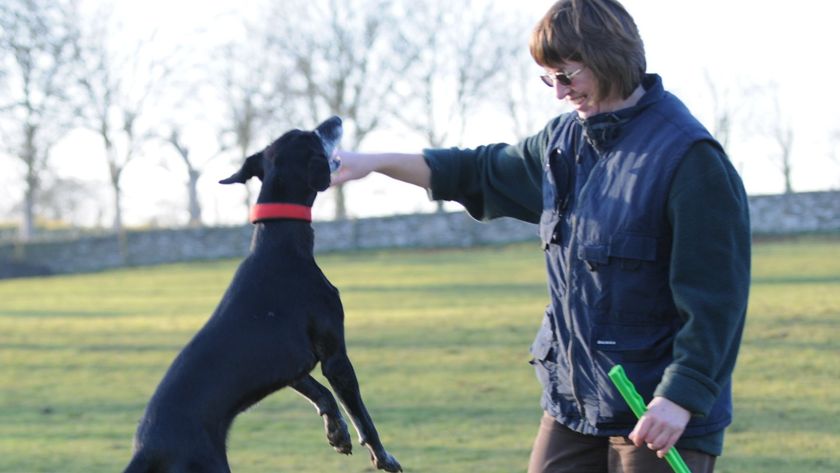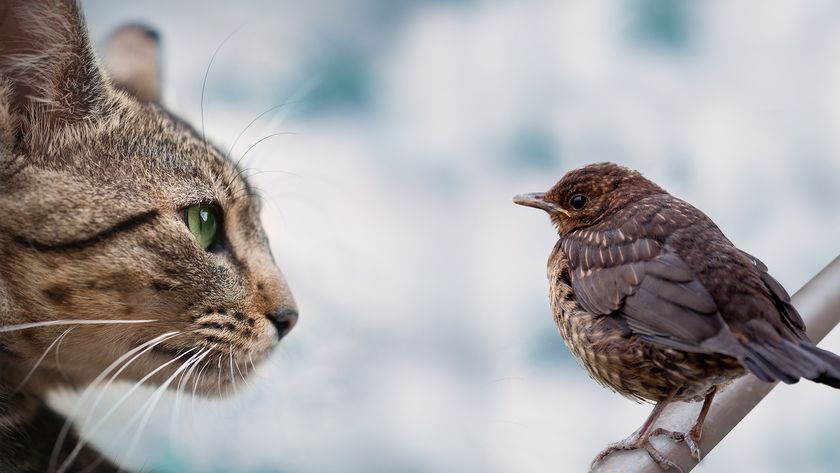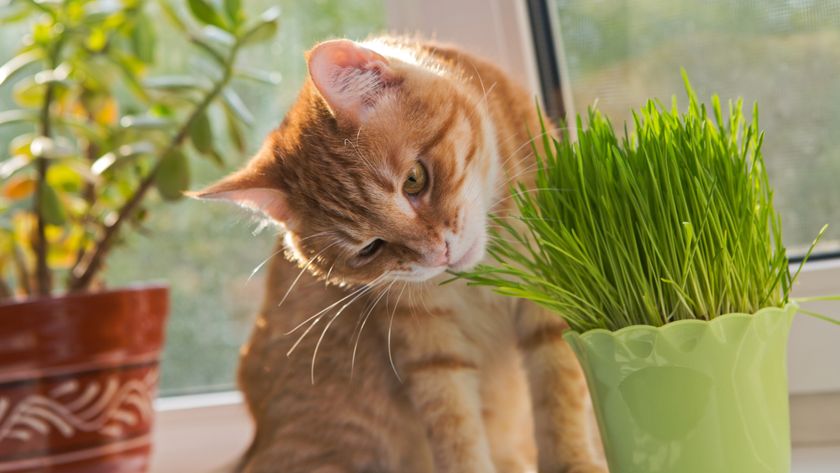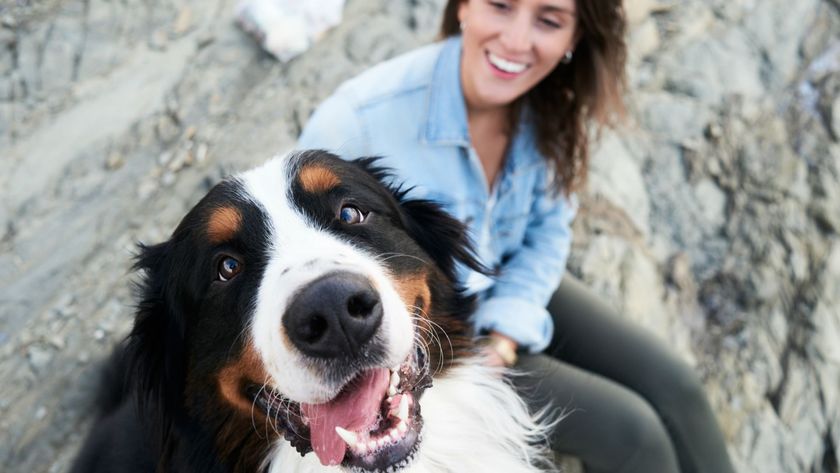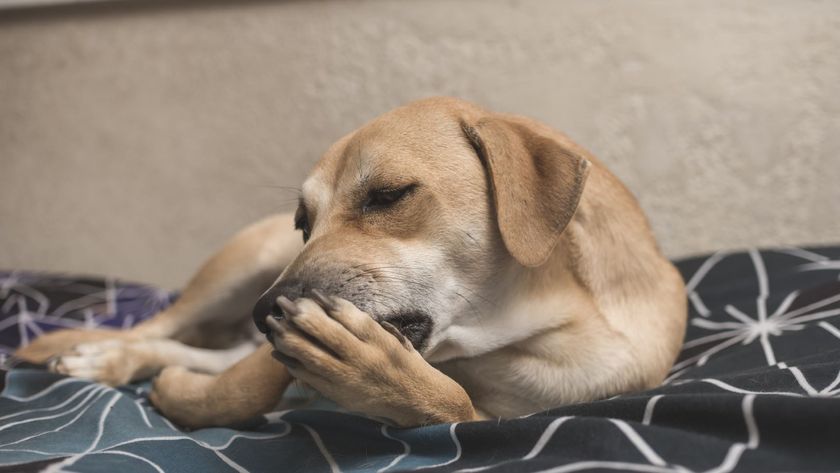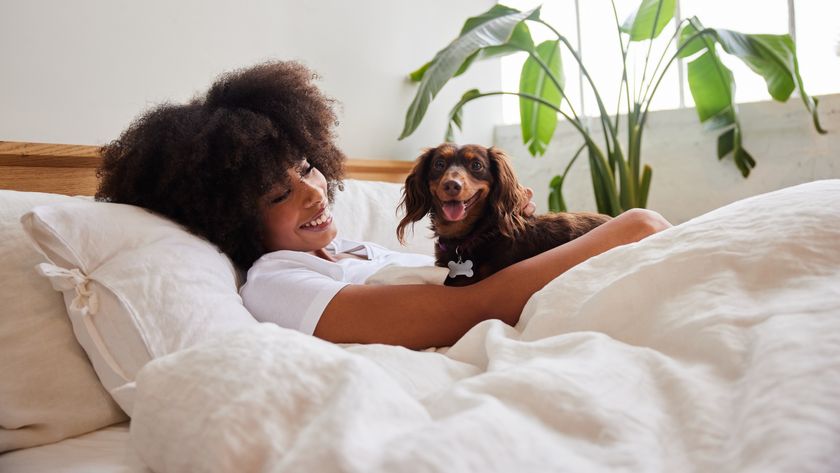Do Great Danes shed? How to care for your massive mutt's mane
Do Great Danes shed? While they may have a short single coat, their sheer sizes means you'll still find a fair bit of fur on your floors
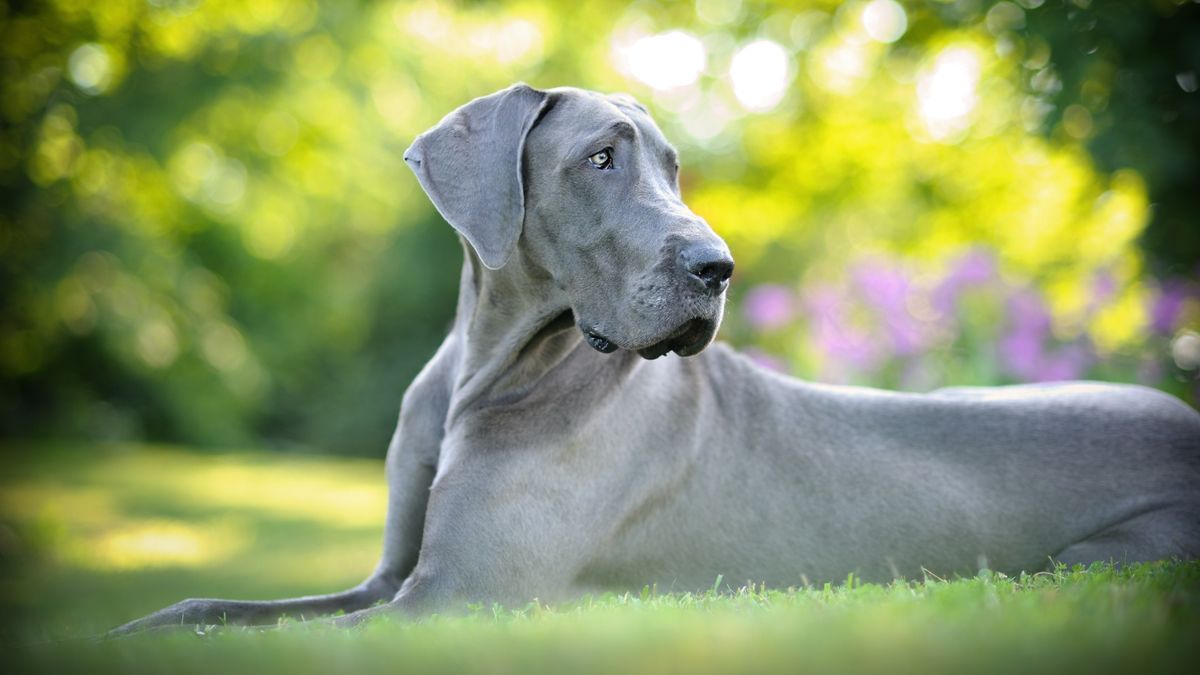
If you’re thinking of welcoming the gentle giant of the canine kingdom into your family, you may have found yourself asking the question “do Great Danes shed?”
Known as the ‘Apollo of dogs” thanks to their stately grace, this huge hound may possess an easygoing, patient and friendly nature that makes them a joy to live with, but when it comes to shedding, their fur isn’t quite as low maintenance as their personality.
On any of the small dog breeds, the Great Danes coat would be an absolute dream. Short and smooth, hair loss is most profuse during the two annual shedding seasons that fall during spring and autumn, with a light amount of fur being lost the rest of the year.
Yet, as you well know, the Great Dane is no small dog. Reaching heights of up to 32-inches and with a body weight that can tip the scales at 120 pounds, this mammoth mutt may have what appears to be an easy to care for coat, but the sheer size of them means that even as light to moderate shedders, you can expect a fair amount of fur.
Thankfully, a good grooming session once or twice a week will be enough to keep all that flying fur to a minimum. Alongside that, investing in one of the best vacuum cleaners for pet hair can be a real lifesaver if you want to make quick work of cleaning up all of that dead hair.
Below, we walk you through everything you need to know about the shedding patterns of the Great Dane, including what can cause them to shed excessively, how best to groom them to keep their coat healthy, and our top tips on how you can minimize shedding to make keeping your home clean that much easier.
Do Great Danes shed?
If you’re thinking of welcoming a Great Dane into your family, you can breathe a sigh of relief because this pup certainly isn’t the worst shedder in the canine kingdom. They’re not fluffy and they don’t have a heavy undercoat, but their sheer size means you’ll still want to be prepared to find a fair amount of fur on your floors.
You’ll find that the Great Dane sheds all year round, but the heaviest shedding occurs in the spring and autumn. This is when their coat performs its biological function of getting rid of all the dead and damaged hair to make way for new growth. Outside of the two peak shedding seasons, expect light to moderate hair loss throughout the rest of the year.
What causes the Great Dane to shed the most?
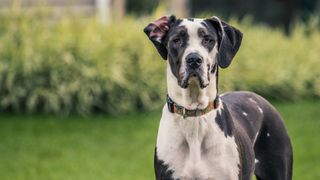
There’s no denying it - having to be on fur pickup patrol every day is one of the downsides of being a pet parent. But it’s important to remember that shedding serves an important function, helping to regulate your pup’s body temperature across the seasons and ensuring that their skin stays protected from injury and disease.
When it comes to shedding, there are two types - natural and unnatural. Natural shedding is when your dog’s coat performs its normal biological function. This means that the hair goes through a regular growth cycle, falling away when it’s dead or damaged to make way for new healthy hair.
Unnatural shedding, on the other hand, typically occurs when there’s an underlying health problem and it’s this type of shedding that you want to be on the lookout for. There are many potential causes of atypical shedding, but the most common include:
- Allergies - Excessive shedding is a sign that your dog’s skin is in distress and food or environment allergies could be to blame. Canine allergies often show up in the skin and itchiness, swelling and irritation are all common symptoms. Your dog will often try to alleviate these by licking and scratching, which can cause their hair to fall out.
- An imbalanced diet - Choosing from amongst the best dog food brands is super important when it comes to ensuring your pup is getting all of the vitamins and minerals they need to thrive. While you don’t have to spend a fortune, try to stay clear of the really inexpensive options as these tend to be low in protein and lack the nutrients the skin and coat need to stay healthy.
- Stress - Whether it’s a major change in their usual routine or a new person or pet in the family, both stress and anxiety can cause excessive shedding.
- Skin parasites - If you notice that your pet is itching and scratching a lot and this is accompanied by an increase in shedding, fleas, ticks or mites could be to blame. Make sure you always use the best flea treatment for dogs to keep your pup protected from pesky parasites.
- Hormonal imbalance - Certain thyroid imbalances, such as hypothyroidism or Cushing's disease in dogs can result in clumps of hair falling out. Excessive shedding can also occur during pregnancy when normal hormone levels are disrupted or when there’s an imbalance of estrogen, testosterone and progesterone.
If you feel that your Great Dane is shedding more than usual and you’re concerned that one of the above causes may be the reason, make an appointment with your vet who will be able to give your pup a thorough examination and offer advice and guidance on the best course of action.
How to groom your Great Dane
Regular grooming sessions aren’t just about keeping your Great Danes coat looking its best - although that’s certainly a bonus! While grooming can help keep your pup’s fur soft and shiny, it also prevents the skin from becoming dry, which means there’s less dead hair being shed.
When it comes to grooming, the most important tool to invest in is one of the best dog brushes. Because a Great Dane doesn’t have a complicated undercoat to deal with, a bristle brush or rubber hand mitt is really all you’ll need to get the job done.
You can brush your canine companion as often as you’d like, but in terms of shedding, for most of the year, once a week is typically all that’s needed to keep that flying fur to a minimum. We recommend you step this up to once a day during peak shedding season to keep on top of things.
When it comes to bathing, Great Danes do have a tendency to suffer from dry skin, so unless they’re particularly dirty or smelly, lathering them up once every six to eight weeks with the best dog shampoo will be enough to ensure their coat stays healthy.
Tips to minimize Great Dane shedding
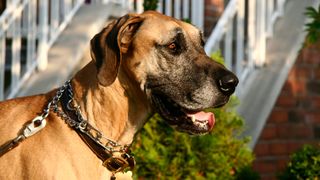
While there’s no miracle fix that will put an end to shedding all together, there are plenty of things you can do to help minimize it. Here are a few ways to reduce shedding:
- Regular brushing - As we’ve seen, weekly grooming sessions with a bristle brush or rubber hand mitt is one of the most effective things you can do when it comes to reducing the amount of fur that falls onto the floor. With the Great Danes coat being short, it’s also a fairly quick and easy process.
- Proper bathing - Overbathing can cause hair loss, but that’s not the only issue to be aware of. When you bathe your pup, make sure you steer clear of human shampoos, which are too harsh for our canine companions and can cause dryness and irritation, and opt for a shampoo that’s been specifically formulated for dogs. If your fur friend has dry skin, look for nourishing ingredients, such as oatmeal, coconut oil and shea butter.
- A healthy diet - Whether it’s the best dry dog food or a wet alternative, feeding your pup a high-quality formula will ensure their body is getting all the nutrients it needs to stay healthy.
- Supplements for the skin and coat - If you feel your dog’s excessive shedding is the result of a deficiency in their diet, have a chat to your vet who may recommend you add a chewable or liquid supplement to their diet containing skin and coat-friendly omega oils to help promote hair health.
- Adequate hydration - Just as diet is an important consideration when it comes to minimizing shedding, so too is ensuring your pup is getting enough fluid to stay hydrated. Water is extremely important for nourishing the skin and coat, so be sure to encourage your fur friend to drink up.
Following the above tips will help ensure your dog’s coat stays healthy and assist in minimizing shedding. If you find that you’re doing all of the things on this list and your pup still seems to be losing their hair at an abnormal rate, speak to your vet who will be able to give your canine companion a thorough check up to rule out any underlying medical issues.
Want to learn more about this giant breed? Here are our favorite Great Dane facts
PetsRadar Newsletter
Get the best advice, tips and top tech for your beloved Pets

Kathryn is a freelance writer who has been a member of the PetsRadar family since it launched in 2020. Highly experienced in her field, she's driven by a desire to provide pet parents with accurate, timely, and informative content that enables them to provide their fur friends with everything they need to thrive. Kathryn works closely with vets and trainers to ensure all articles offer the most up-to-date information across a range of pet-related fields, from insights into health and behavior issues to tips on products and training. When she’s not busy crafting the perfect sentence for her features, buying guides and news pieces, she can be found hanging out with her family (which includes one super sassy cat), drinking copious amounts of Jasmine tea and reading all the books.
